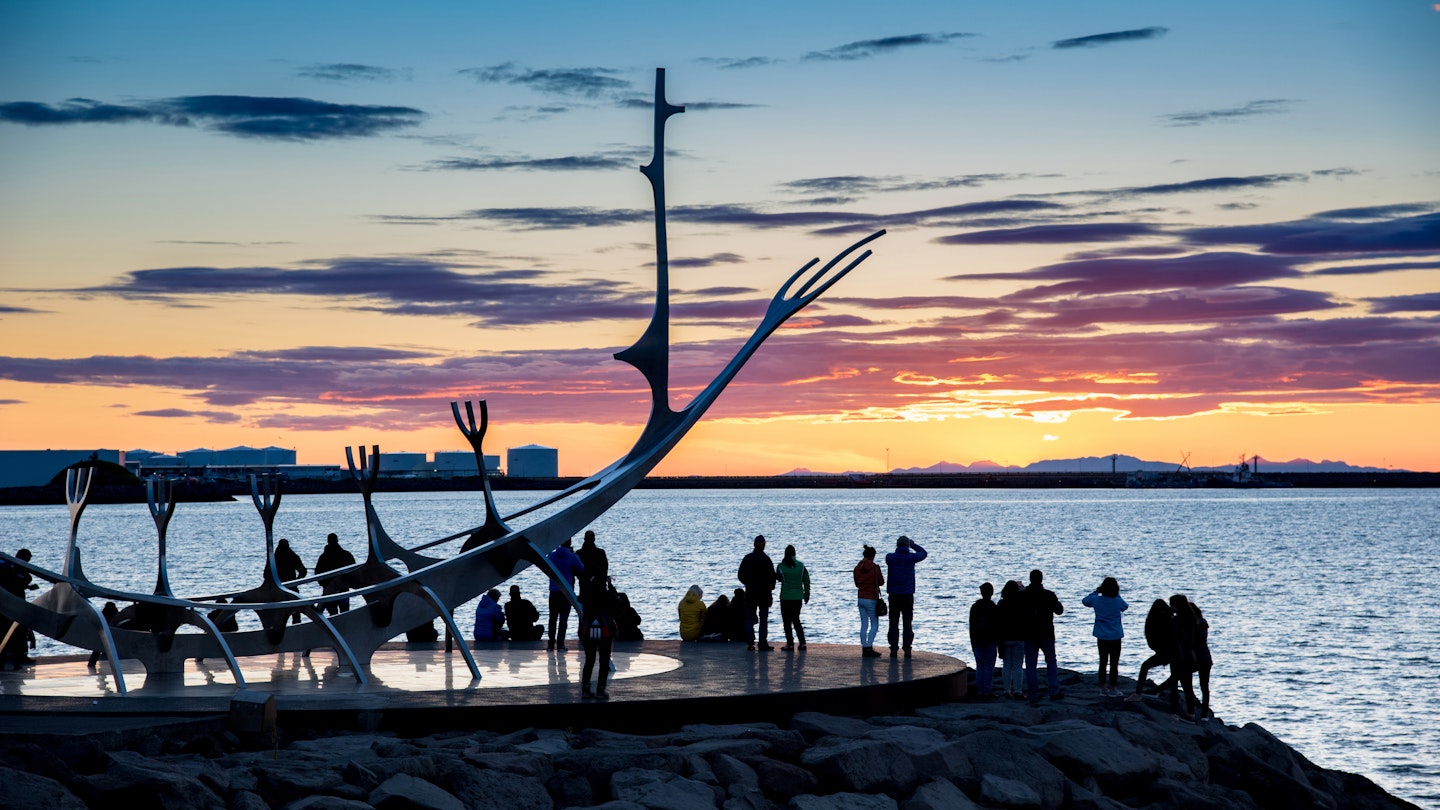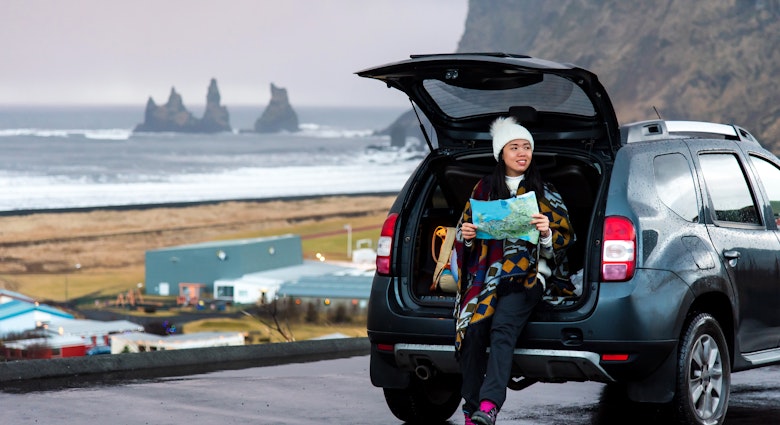Reykjavík has a population of just 130,000 people, but the Icelandic capital spans an area double the size of Paris. To get around, locals use the automobile like an expensive overcoat, and then spend the next twelve hours stuck in traffic, dreaming of flying cars.
But habits are changing and so is the city: walking, cycling and taking the bus have never been easier. Here's a guide to the best ways to get around Reykjavík.
Getting around the city center is easy on foot
Visitors staying solely in the city center may not notice the sprawling size of Reykjavík, The city center – from Old Harbour to the Hlemmur bus terminal – is less than three kilometers in length, making it easy to explore by walking. Buses travel up and down Hverfisgata street, but it's best to wander Laugavegur – the main shopping street – on foot.
Rent an electric scooter for easy, fun exploring
Electric scooters are widely available for rent in Reykjavík, with four different companies operating some 1000 vehicles for by-the-minute rental. Expect to pay around 1000 Krona (US$7.45) for rides within the downtown area. Helmets are harder to find, however, and legally riders aged 16 or younger have to wear one; if you have a cycle helmet at home, bring it with you.
Strætó buses are a great way to get around the metropolitan area
Reykjavík’s public transport system is yellow on the outside, and green on the inside; the city's brightly colored Strætó buses increasingly run on the city’s renewable electric energy supply. The worst thing about catching the bus is standing still outside waiting in the elements, but hang in there. At peak operating times, buses arrive every 10–15 minutes, but in the middle of the day and during the evening, frequency drops to every 30 minutes. Service stops around midnight, and resumes around 6:30am on weekdays; Sunday services are considerably less frequent.
The City of Reykjavík is one of five municipalities making up the urban sprawl known as the Capital Region. Altogether, about 65% of Iceland’s population live in the area, and the 27 bus routes operated by Strætó cover the entire metropolitan area.
Buses no longer accept cash or bank cards on board; riders have to pay with special KLAPP tickets. Most riders use their smartphones as a bus pass via the KLAPP app, but prepaid cards are also available from eighteen vendors in Reykjavík. Rides cost 470 Krona (US$3.50), valid for 75 minutes in transit. Children under the age of twelve travel for free, and bicycles are allowed on board, unless space is limited.

A Reykjavík city card gets you onto buses and into museums and swimming pools
For those visiting for just a few days and looking for savings, the Reykjavík City Card is available for one, two or three days. The card is essentially an unlimited bus pass with generous perks, including free access to twelve museums and exhibitions and the city's lively public swimming pools. The 24-hour option costs 4200 Krona (US$31.20) or the equivalent of nine bus tickets.
Rideshare services are illegal, use a taxi instead
First off, do not attempt to call an Uber. Ride-hailing services are illegal due to a license-quota system in Iceland, intended to support job security among taxi drivers. The two main taxi companies are Hreyfill and BSR. Expect to pay at least 17,000 Krona (US$126) for a taxi from the center of Reykjavík to Keflavik airport.
Car-sharing is a great alternative for driving around the city
There are some handy car-sharing companies with hourly rates for vehicles, such as Zipcar and a new service from Hopp, set to launch later in 2022. With stations throughout the city, these cars are largely aimed at locals seeking to move groceries or other items within city limits; a regular rental car is generally a better option for day-trips out of Reykjavík.

Rent a car for easy day trips or to get further afield
When booking a rental car for exploring Iceland, note that Keflavík International Airport is an hour by bus from Reykjavík. Picking up your hire car by the airport or in the nearby town of Keflavík is much more convenient than doing so in Reykjavík. From July and August, book hire cars well in advance.
Traveling around the capital by car, it's best to avoid the morning rush hour from 7:30am to 9am, and the afternoon rush hour from 4pm to 5pm. This, of course, depends on direction – traffic heads into the city in the morning, and out to the suburbs in the afternoon.
Where to park in Reykjavík
Parking a car on the street may seem like an impossible task, but fear not – the capital has a network of multi-level parking garages and a website showing by-the-minute availability. The largest garages are at and close to the Harpa Concert Hall. Expect to pay around 200 Krona (US$1.50) per hour.
Bikes are handy for exploring the coast
A series of shared-use paths — designed for both cyclists and pedestrians — connect the inlets of the Capital Region by threading along the coastline, running all the way from the tip of the Seltjarnarnes peninsula to downtown Hafnarfjörður. Following these paths is not just a shortcut, but a great way to recharge in an environment free of cars.
To rent bikes, long or short term, the two main downtown options are Reykjavík Bike Tours by the Old Harbour and Borgarhjól at Hverfisgata Street. The city's largest bike store is Örninn, in southeast Reykjavík; used bikes are largely traded via Facebook marketplaces such as Hjóladót til sölu, which counts one-fifth of Iceland's population as members.

Why bicycles are my favorite way to travel
By Nordic standards, Reykjavík is hardly a city of cyclists. Blame the wind – statistics cannot explain how often it blows in the opposite direction to the way you are riding. Always, I tell you, always.
But major improvements to bike paths, led by Mayor Dagur Eggertsson (known for showing up to meetings with world-famous leaders with a bike helmet in tow) have made cycling a serious alternative to cars and traffic jams.
Electric bikes are another revolution for year-round cycling. Beating the wind with a motor makes it easier to estimate travel times, and means you'll be less likely to arrive dripping in sweat. Over winter, most cyclists use stud tires for safety.
For fun, I like to cycle the Elliðaárdalur, the city’s largest public park. For an extra stretch, continue onwards to the hills of Rauðhólar and loop the outskirts by traveling along Lake Rauðavatn – or wait for the bus back to the center.












